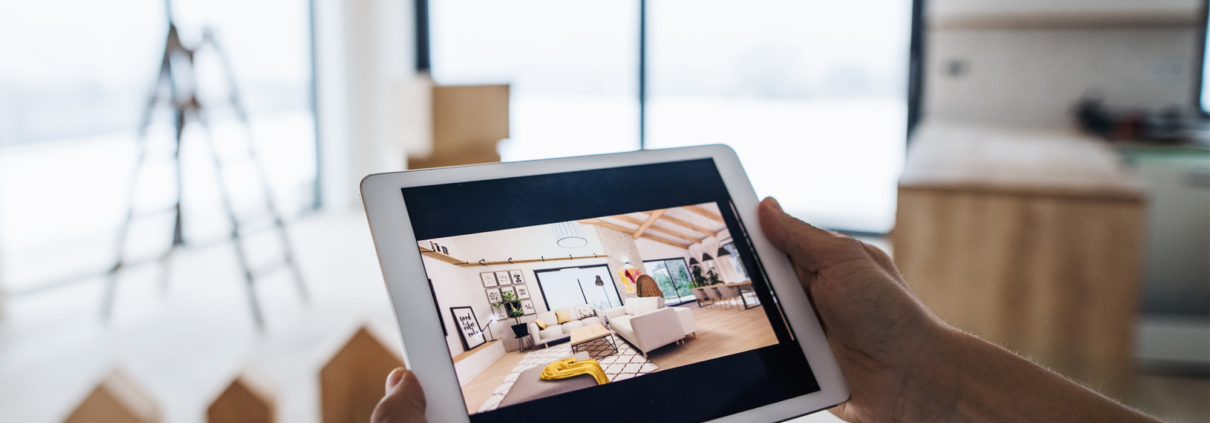How To Show Your Home During the Pandemic: The Definitive Seller’s Guide to Virtual Tours and More
Covid-19 has put prospective home sellers and homebuyers in a precarious position. Despite wanting to buy or sell property, the contagious virus has led governments to impose far-reaching lockdowns in most countries around the world. Considering the coronavirus spreads from one person to another by means of small droplets in the air, social distancing has been encouraged in all public spheres.
The property market has not been unaffected by social distancing measures. Whereas the home showing or open house has been the jewel in the marketing crown of real estate agents – offering prospective buyers a chance to see and inspect a property first-hand, lockdowns and social distancing measures have made it almost impossible to utilise this important marketing tool.
Not to be discouraged, the real estate industry has, however, used technology to its advantage. Like many other sectors utilising the internet to work remotely and in adherence to lockdown and social distancing rules, the property world has also found ways to still put homes in the best possible light, while keeping buyers and sellers safe. Here is how virtual tours have become the real estate industry’s saving grace in the face of the coronavirus outbreak.
How virtual tours work
Before Covid-19 virtual home tours were a niche offering that some real estate agencies offered to property sellers as an additional marketing arm. When the coronavirus started forcing buyers indoors, traditional home viewings became impossible for fear of putting the health of sellers, buyers and real estate agents in jeopardy. Auctions were also put on hold, and virtual tours suddenly became the only way in which real estate agents could showcase the properties on the market.
Before the outbreak of Covid-19 and the ensuing concerns for the health of buyers, sellers and agents, virtual tours were a part of the real estate agent’s marketing arsenal, albeit one that was not meant to replace the traditional open house. If prospective buyers were unable to view the property in person for whatever reason (for instance, if they were abroad or in another part of the country) virtual tours were a great way to give interested buyers a video-enabled remote tour of the property which is as close to an actual open house as possible.
Now, virtual tours have become the recommended option for sellers and agents to avoid face-to-face contact while still marketing the property as widely as possible.
Types of virtual tours
The internet offers a myriad of different options when it comes to virtually showcasing the property and, contrary to what you might have thought about this option, many of these options do not require specialised programmes and software.
One of the simplest ways a real estate agent can use the World Wide Web to show a home to prospective buyers is to utilise video-calling or conferencing options. Very simply, and agent might use FaceTime or WhatsApp’s video calling option to take individual buyers on a tour through the property, allowing them to ask the agent to focus on specific parts of the home that they might be interested in seeing.
Virtual open houses allow larger groups of people to see the property at a time, and in this regard, video conferencing software like Zoom (which has also become one of the most popular remote meeting tools in the Covid era) might prove very useful to home sellers and to the agents helping them to get their property off the market. Where professionally produced footage of the property would have been a great additional marketing tool pre-coronavirus, buyers might now appreciate the option to view “raw” footage of the property. Live events like these also give prospective buyers the chance to ask all the questions they might have about the home.
3D tours
Another option to consider if you’re marketing your home without the freedom of having open house opportunities is to set up a 3D tour of the property. In this instance, agents use 3D cameras to capture images of the property and all the rooms in the house. These are then rendered in three dimensions with specialised software, allowing interested buyers to view the property from many different angles and to get a real sense of the property’s “flow”.
3D tours may be included as a part of the real estate agency you’re using to help you sell’s marketing plan, and may be quite pricey. However, especially if you are selling high-end luxury property (which are typically more expensive, and might need to be marketed a bit more aggressively and to a wider buyer pool) 3D tours can be very useful.
Ask your real estate agent if 3D tours are a marketing option that they would recommend for the sale of your home.
Virtual staging
The staging of the home is an integral part of allowing potential buyers to imagine themselves in the home. When a home is staged, the goal is to create a space that is as neutral as possible, which usually entails putting away sentimental items like family portraits, or décor elements that might draw the attention away from the merits of the property itself.
While traditional home staging seems like an unnecessary expense when buyers will not be coming to inspect the property in person, technology has paved the way to virtually stage the home. When the home is virtually staged, there is far greater freedom in terms of just how the space can be “decorated”. Unlike traditionally staged homes, colour and décor options are almost unlimited when the property is virtually staged.
Staging software uses simulated images of the rooms in a property to reimagine everything from paint colour to furnishings and ornaments. In many respects, the virtual iteration of the home staging give home sellers far more options than the traditional staging would, at a far more affordable price.
Real estate agents usually recommend staging the property just before the home is shown to prospective buyers, which negates the need to paint over accent walls that might not tickle the fancy of prospective buyers, and to get rid of other décor elements that may draw the attention away from other, more appealing features. With virtual home staging, changing everything from a room’s set-up to its colour is a breeze, and doesn’t require any other financial input from the seller, aside from the cost of the virtual home staging itself.
How home sellers can use virtual tours to find the right buyer
Even if many of the tools used to virtually showcase a property were available before the outbreak of the novel coronavirus, they are really coming into their own as buyers and sellers try to observe social distancing protocols in the property arena.
Most buyers may still want to see a property in person before ultimately taking the plunge and making an offer to purchase, but in lieu of open houses, virtual tours have become the best way to put a property in the very best light when it is advertised online. While online listings were meant to give prospective buyers an overall idea of what is available on the market in the past, these now need far more persuasive power, as buyers don’t have easy access to view the property.
Tech tools like video calling and conferencing, 3D tours and virtual home staging have truly made virtual home tours the next-best thing. Virtual tours help buyers to get to know a home almost as well as they would, had they seen the property in person.
When interested buyers do ultimately come to see the property in person, real estate agents and home sellers need to take every precaution in order to limit their chances of exposure to the coronavirus, including providing hand sanitiser, disinfecting wipes and masks to buyers. Sellers, agents and buyers should also make sure to observe social distancing and to keep a distance of at least 1.5 metres between themselves and others.
Conclusion
Showing a property in the midst of the coronavirus pandemic poses great challenges and risks to buyers, sellers and agents. For this reason, online tools like virtual home tours, 3D tours and virtual staging have become the designated alternatives.
Using video calling services like FaceTime, WhatsApp and Zoom, real estate agents can now give virtual tours of the property to individuals and to groups of buyers, allowing them to ask all the questions they would at a typical home showing.
While virtual options like these aren’t likely to replace traditional showings once the property industry is able to function as it did before Covid-19, they have provided viable options to the real estate industry at large as it grapples with the influence of the pandemic, and are likely to be used more in the future.
Perfect Agent’s database of qualified and experienced real estate agents is filled with industry experts that utilise the latest technology to help you sell fast, even in challenging circumstances. Still looking for an agent you can trust? Simply fill out a short questionnaire, and we’ll find an agent that is perfect for your needs.




